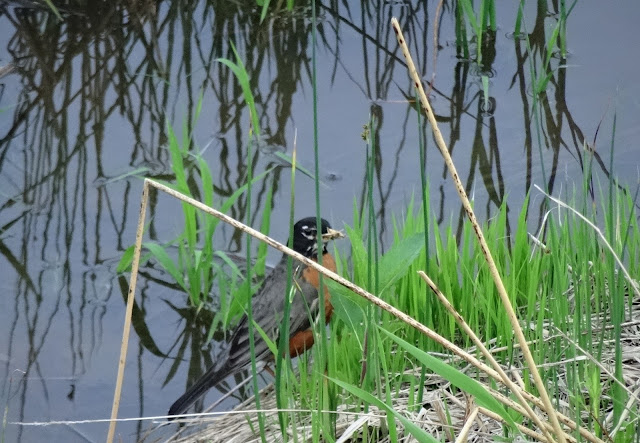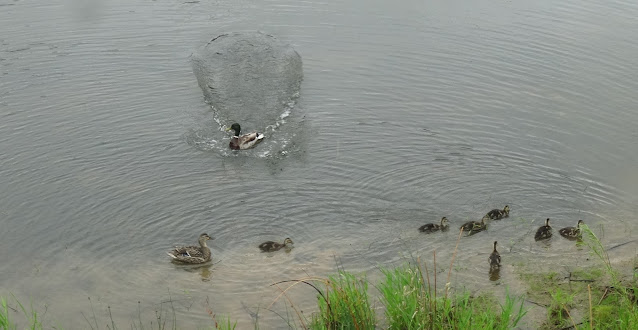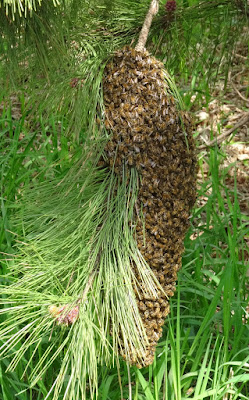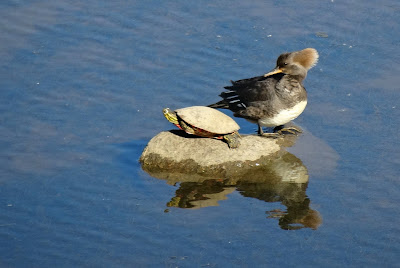5/30/2021
5/29/2021
robin
Robins nesting by the pond have 4 eggs in their nest. The female gathered food items on the shore while taking a break from incubating her clutch. It looks like she caught an insect larva, but Robins also eat grubs, snails, spiders, beetles, grasshoppers, termites, crickets, and other insects.
5/27/2021
golden alexanders
Wildflowers are blooming in the pond area. Zizia aurea Golden Alexanders feed bees, wasps, flies, and beetles with pollen and nectar. The larvae of some butterflies also feed on this native plant.
5/22/2021
green heron
5/21/2021
hooded merganser ducklings
Today the Hooded Merganser female showed up on the pond with 15 ducklings. This species nests in a cavity, probably in a tree or stump nearby. Once the eggs hatch, the ducklings follow the mother to water. They fed for a while, then she signaled them to rest. They followed her to shore and gathered under her wings. Well, sort of . . . there were many of them!
They dive under water to find small fish, amphibians, clams, mud crabs, crayfish, tadpoles, frogs, and aquatic insects and other crustaceans. They also consume some aquatic plants.
5/20/2021
5/16/2021
bee swarm
By Sunday morning they had all gone from the tree branch, no trace left behind of their weekend stay.
5/11/2021
convivial Merganser
The Mallard has been hanging around for weeks while his mate sits on her nest of eggs. Sometimes we see the pair of Mallards together when the female comes out for meals; they dabble together on the shores. That day, the Merganser was happy to float with one or both. This afternoon, she was again present and just as friendly to the turtle who had been sitting on the rock since morning. What a friendly neighbor to all.
5/05/2021
blue-winged teal pair
5/03/2021
fox sparrow
5/02/2021
phoebes
5/01/2021
spotted sandpipers
A flock of shorebirds stopped today at the pond on their migration trip. Spotted Sandpipers Actitis macularius, catch food in several different ways. Like most other sandpipers, they probe into sand or mud with their bills looking for food -- aquatic larvae of insects, beetles, worms, snails or crustaceans. And like herons, they also lunge at moving small fish in the water, pick insects off plants, or snap at flying prey.












